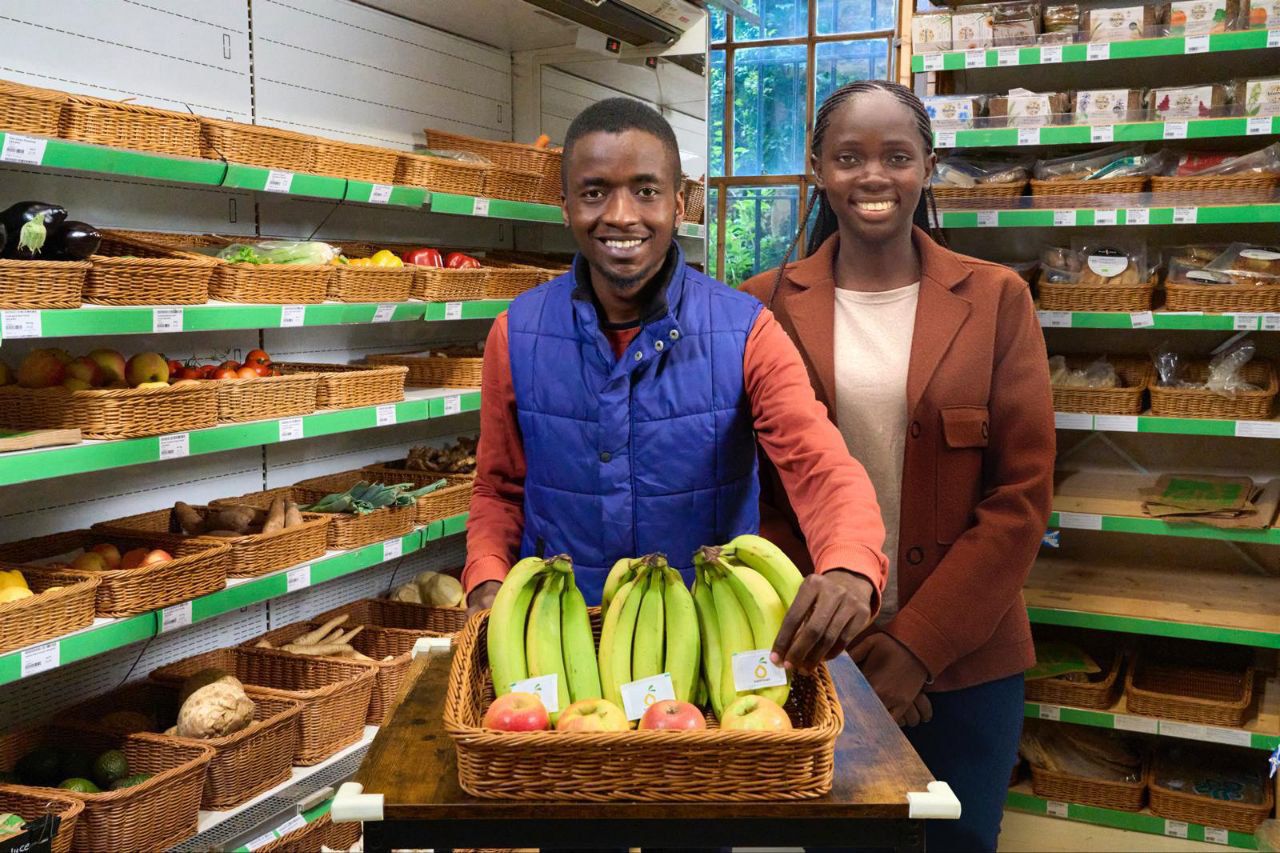Top Short-Term Investments in Africa for 2025
Table of Contents
Tired of seeing your savings collect dust? Short-term investments offer a dynamic way to grow your wealth,but what does the future hold? Let’s dive into the trends shaping the landscape,drawing parallels from Africa’s innovative solutions and applying them to the American context.
Imagine accessing high-yield savings directly from your Venmo or Cash App. That’s the power of embedded finance, and it’s poised to explode. In Africa, mobile money platforms like M-Pesa have revolutionized savings [[1]]. Could we see similar disruption in the US?
expect to see more partnerships between established fintech giants and customary banks. Think goldman Sachs powering Apple Card‘s savings account – a glimpse into the future where financial services are seamlessly integrated into everyday apps.
Expert Tip: Look for platforms offering FDIC insurance to protect your deposits, even within mobile apps.
As embedded finance grows,regulatory scrutiny will intensify. the SEC and CFPB will likely focus on consumer protection, data privacy, and ensuring fair lending practices. companies that prioritize clarity and compliance will thrive.
Fixed deposit accounts offer security,but they can feel rigid. The future? Hyper-personalized rates and terms tailored to your individual needs. Imagine a bank offering a 45-day fixed deposit wiht a rate that adjusts based on your spending habits.
AI will play a crucial role in optimizing fixed deposit rates. Banks will use machine learning to predict interest rate movements and offer competitive yields while managing their own risk. This means potentially higher returns for savvy investors.
quick Fact: did you know that some credit unions already offer “bump-up” CDs,allowing you to increase your rate once during the term if rates rise?
Expect to see more environmentally conscious options. “green” fixed deposits will channel funds into lasting projects, allowing investors to earn returns while supporting environmental initiatives. This aligns with the growing ESG (Environmental,Social,and Governance) investing trend.
Treasury Bills and bonds are traditionally seen as institutional investments.But fintech is changing that,making them accessible to everyday Americans. Platforms like TreasuryDirect are a start, but expect even more user-friendly options.
Imagine buying a fraction of a Treasury bond for as little as $100. Fractional bond ownership will lower the barrier to entry, allowing more people to diversify their portfolios with low-risk government securities. This is similar to how platforms like Robinhood have democratized stock investing.
Exchange-Traded Funds (ETFs) that focus on short-term Treasury Bills will become increasingly popular. These ETFs offer diversification and liquidity, making them an attractive option for risk-averse investors seeking stable returns. Consider the iShares 1-3 Year Treasury bond ETF (SHY) as a current example.
Apps like Acorns and stash have already made investing more accessible. The future? Even more gamification and a greater emphasis on financial literacy. think interactive tutorials, personalized investment recommendations, and rewards for achieving financial goals.
AI-powered financial coaches will guide users through their investment journey, offering personalized advice and support. These coaches will analyze spending habits, risk tolerance, and financial goals to create tailored investment plans. This is like having a financial advisor in your pocket.
The Challenge of Robo-Advisors
While robo-advisors offer convenience, they sometimes lack the nuanced understanding of individual circumstances that a human advisor possesses. The future lies in hybrid models that combine AI with human expertise.
While agricultural crowdfunding is gaining traction in Africa, it’s still relatively niche in the US.However, the growing interest in sustainable agriculture and local food systems could change that. Platforms connecting investors with local farms could become more common.
Imagine a CSA model where you not only receive fresh produce but also invest in the farm’s future. This could involve crowdfunding campaigns for new equipment, infrastructure improvements, or expansion projects. It’s
Looking to make the moast of your savings in the short term? The investment landscape is rapidly evolving. We sat down with Dr. Anya Sharma, a leading expert in financial technology and investment strategies, to discuss emerging trends in short-term investing and what they mean for everyday Americans.
Time.News editor: Dr. Sharma, thank you for joining us. Let’s start with mobile money and embedded finance. The article mentioned M-Pesa in Africa as a model. How likely are we to see a similar revolution in the US?
Dr. anya Sharma: The potential is significant, but the US market is different. We’re already seeing the beginnings of this with partnerships like Goldman Sachs powering the Apple Card’s savings account. The key is “embedded finance” – seamlessly integrating financial services into platforms people already use daily, like Venmo or Cash App. Expect to see more fintech collaborations with traditional banks to offer high-yield savings options directly within these apps, simplifying access and improving convenience. Though, it’s crucial to choose platforms where your deposits are FDIC insured.
Time.News Editor: Regulation is always a concern with fintech innovation. What should investors be aware of?
Dr. Anya Sharma: Absolutely.Regulatory scrutiny from the SEC and CFPB will intensify as embedded finance grows. Investors should prioritize transparency and due diligence. Look for companies with clear terms and conditions and a strong track record of compliance. Data privacy and fair lending practices are critical areas to watch. The rise of *short-term investing* opportunities will be closely observed,so *short-term investors* should always be informed.
Time.News Editor: Moving on to fixed deposit accounts, the idea of personalized rates and terms sounds appealing. How will AI play a role in this?
Dr. Anya Sharma: AI will be instrumental in optimizing fixed deposit rates. Banks will leverage machine learning to predict interest rate movements and tailor rates to individual customer profiles and spending habits. This has the potential to provide *short-term investors* with higher yielding oppotunities. While this could mean better returns for *savvy investors*, it also means that banks can better manage their own risk. It might interest investors that some credit unions already offer “bump-up” CDs, where you can increase rates during the term.
Time.News Editor: The article also mentioned “green” fixed deposits. Can you elaborate on this increasingly popular option?
Dr. Anya Sharma: Yes, “green” fixed deposits are an extension of the growing ESG (environmental, Social, and Governance) investing trend. these deposits channel funds specifically into environmentally lasting projects like renewable energy or conservation efforts. It’s a way for investors to align their financial goals with their values, earning returns while supporting initiatives they believe in.
Time.News Editor: treasury Bills and bonds are traditionally less accessible. How is fintech changing that?
Dr. Anya Sharma: fintech is democratizing access through fractional bond ownership and simplified investing options. Instead of needing a large sum to invest in a full bond, *short term investors* can now purchase a fraction of a Treasury bond for as little as $100, opening up this traditionally low-risk and stable avenue to a wider group of people.T-Bill ETFs are another excellent option sence they offer instant diversification and liquidity.Keep an eye on ETFs like the iShares 1-3 Year treasury Bond ETF (SHY).
time.News Editor: Micro-investment apps are already popular. What future developments do you foresee?
Dr. Anya Sharma: Expect more gamification and a greater emphasis on financial literacy. Apps will incorporate interactive tutorials, personalized investment recommendations, and reward systems to encourage responsible investing habits. The rise of AI-powered personal investment coaches is also to be expected, offering real time suggestions and tailored investment strategies for your needs.Don’t expect Robo-advisors to wholly replace traditional advice. A mix of AI and human support is the best strategy moving forward.
Time.News Editor: agricultural crowdfunding is mentioned as a niche area. Could this gain traction in the US?
Dr. anya Sharma: It’s still early days, but the growing interest in sustainable agriculture and local food systems could drive adoption.platforms connecting investors with local farms, possibly through a Community Supported Agriculture (CSA) 2.0 model, could become more prevalent. Investors could support local farms and get fresh produce. It is still too early to tell if this catches on in a big way.
Time.News Editor: Any final advice for our readers looking to navigate the future of *short-term investing*?
Dr. Anya sharma: Stay informed, do your research, and diversify your portfolio to manage risk. Be especially mindful of regulation and onyl use platforms where your investments are insured. The future of investing is all about personalization and accessibility, so be ready to embrace new technologies and strategies.
Time.News Editor: Dr. Sharma, thanks for your time and insights!










